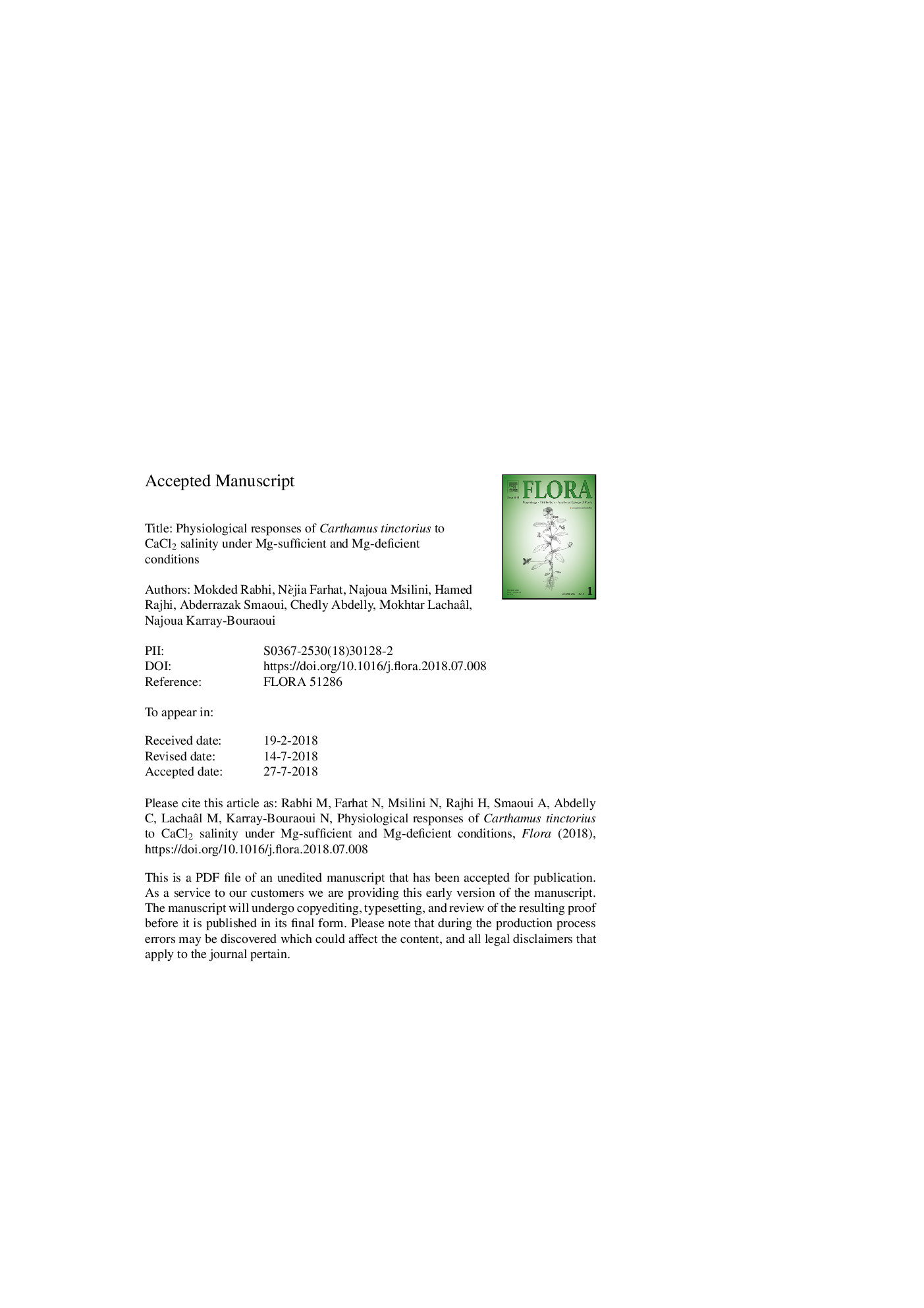| Article ID | Journal | Published Year | Pages | File Type |
|---|---|---|---|---|
| 8470125 | Flora - Morphology, Distribution, Functional Ecology of Plants | 2018 | 27 Pages |
Abstract
CaCl2 effects on growth, photosynthesis, and Mg nutrition were investigated in safflower (Carthamus tinctorius L.) plants at low and optimal Mg availability. After seed germination on sand, obtained seedlings were grown under greenhouse conditions and subjected to 3 treatments for 4 weeks: control (C: 1.5âmM Mg), CaCl2 salinity (S: 40âmM CaCl2), and combined effects of CaCl2 salinity and Mg deficiency (DS: 0.1âmM Mg and 40âmM CaCl2). The application of 40âmM CaCl2 severely affected root, stem, young leaf, and old leaf growth. This was due to a combination of the three types of effects (osmotic, toxic, and nutritional). Indeed, in response to CaCl2 presence under both Mg-sufficient and deficient conditions, photosynthetic activity was reduced by stomatal closure to prevent cell dehydration. As a consequence, plant water status was not severely affected in S treatment and this osmotic effect disappeared under Mg-deficient conditions (DS treatment). Membrane integrity was slightly impaired in both S and DS treatments. Mg and Ca imbalances were also detected although plants exhibited adaptive responses to cope with Mg deficiency coupled or not with excessive Ca accumulation. Treated plants substantially increased Mg/Ca uptake selectivity, which allowed them to maintain Mg uptake efficiency unaffected. They also markedly increased their Mg use efficiency for chlorophyll synthesis. Nevertheless, amongst the three salt effects, nutritional imbalances seem to be the most harmful component. As a whole, the responses of the plant to the combined effects of CaCl2 application and Mg deficiency were dominated by salinity stress responses.
Related Topics
Life Sciences
Agricultural and Biological Sciences
Ecology, Evolution, Behavior and Systematics
Authors
Mokded Rabhi, Nèjia Farhat, Najoua Msilini, Hamed Rajhi, Abderrazak Smaoui, Chedly Abdelly, Mokhtar Lachaâl, Najoua Karray-Bouraoui,
